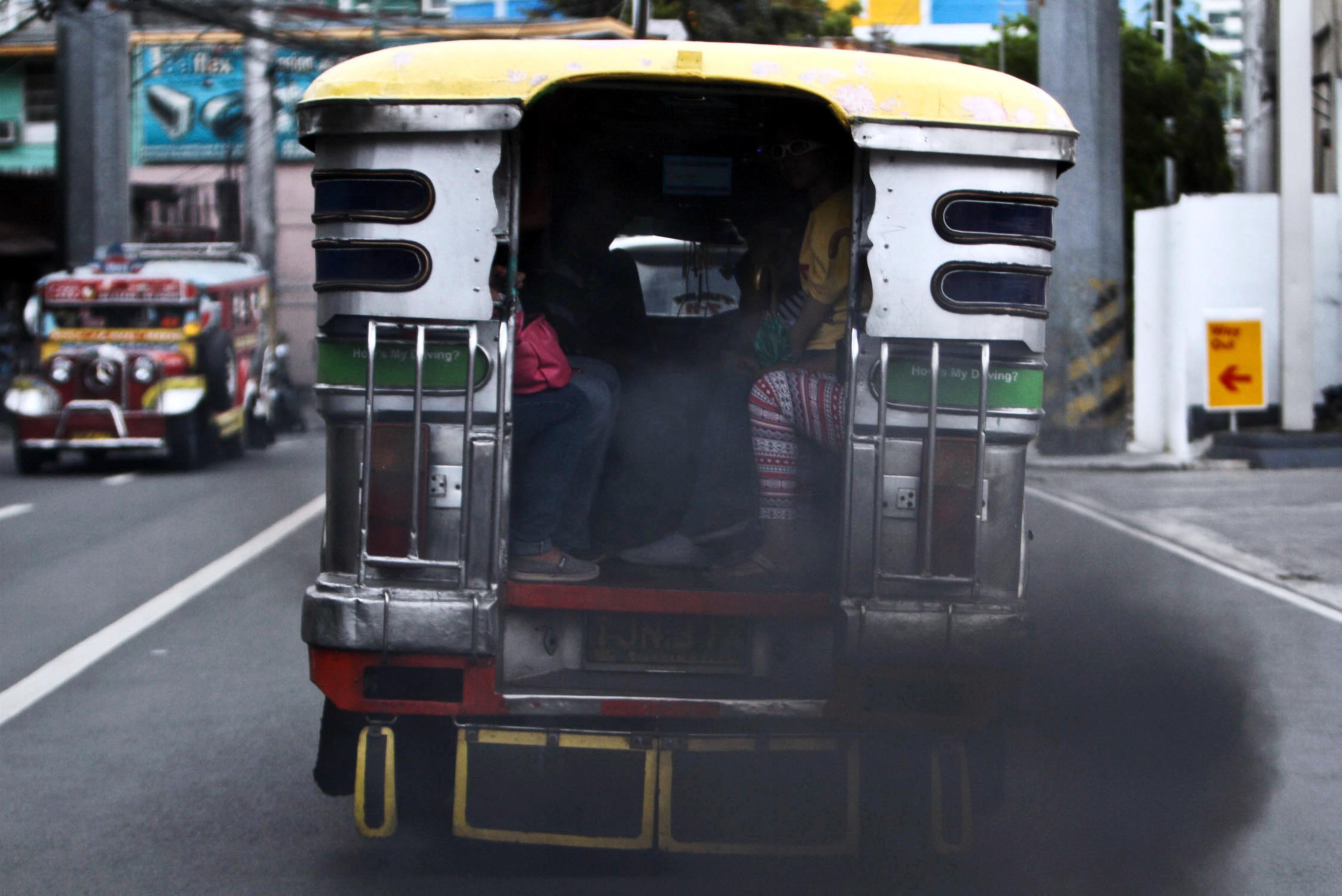
THIS CAN’T GO ON It may remain contentious, but the country’s jeepney modernization program seeks to end scenes like this, largely for climate change mitigation. —INQUIRER FILE PHOTO
PARIS—A major new study published on Thursday on the effectiveness of climate measures such as taxes or subsidies in reducing greenhouse gases has found stand-alone measures fail to make a big difference.
Published in the journal Science, the study examined 25 years of public policies in 41 countries across six continents.
It concluded that out of the 1,500 policies analyzed in sectors including energy, transport, and construction, “only 63 cases of successful climate policies, each leading to average emission reductions of 19 percent, were identified.”
“The researchers show that bans on coal-fired power plants or combustion engine cars do not result in major emissions reductions when implemented alone,” said the Potsdam Institute for Climate Impact Research (PIK) that led the study with Mercator Research Institute on Global Commons and Climate Change (MCC).
Policy interventions
“Successful cases only arise in tandem with tax or price incentives in well-designed policy mixes, as shown in the UK for coal-fired power generation or in Norway for cars,” the researchers said.
The study used a new OECD database and an innovative approach that combined machine learning methods with established statistical analyses.
It “identified 63 successful policy interventions with total emission reductions between 0.6 billion and 1.8 billion [metric tons] CO2.”
By comparison, humanity emitted 57.4 billion tonnes of CO2 equivalent in 2022, according to United Nations estimates.
Among the successes identified were Britain’s introduction in 2013 of a minimum carbon price, subsidies for renewable energy, and a coal phase-out plan.
The researchers hope their work will influence the climate roadmaps countries are updating and must submit to the UN by February 2025.
These roadmaps aim to keep alive the Paris Agreement’s flagship goal of limiting warming to 1.5 degrees Celsius from pre-industrial levels.
‘Right mix is crucial’
An interactive website, “Climate Policy Explorer,” provides an overview of the results, analysis, and methods, and is accessible to the public.
READ: Metro Manila air quality remains ‘good to fair’ – DENR
“Our findings demonstrate that more policies do not necessarily equate to better outcomes. Instead, the right mix of measures is crucial,” explained the study’s lead author, Nicolas Koch of PIK and MCC.
“For example, subsidies or regulations alone are insufficient; only in combination with price-based instruments, such as carbon and energy taxes, can they deliver substantial emission reductions.”
“But by focusing only on 69 statistically identifiable large trend breaks, they miss the impact of thousands of smaller efforts globally, and the cumulative and often self-reinforcing impact of many smaller measures,” said Michael Grubb at University College London.
He also acknowledged “the most sophisticated study to date,”
“Their conclusion that big impacts require combinations of policies makes absolute sense,” he added.
“The study only looks for policies making sudden reductions, whereas most climate policies work on the efficiency of new things or the long-term trajectory of emissions, taking many years to build up greener infrastructure or ways of living,” said Robin Lamboll at Imperial College London.

